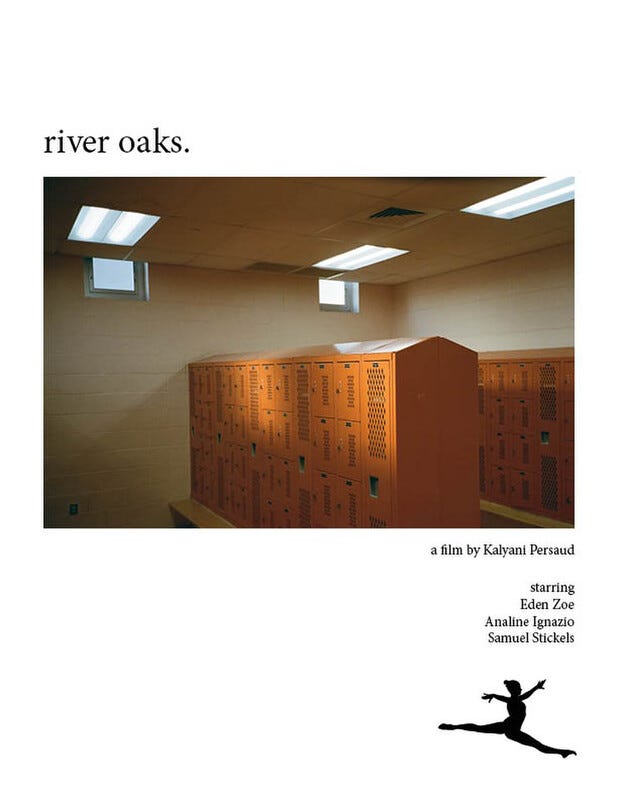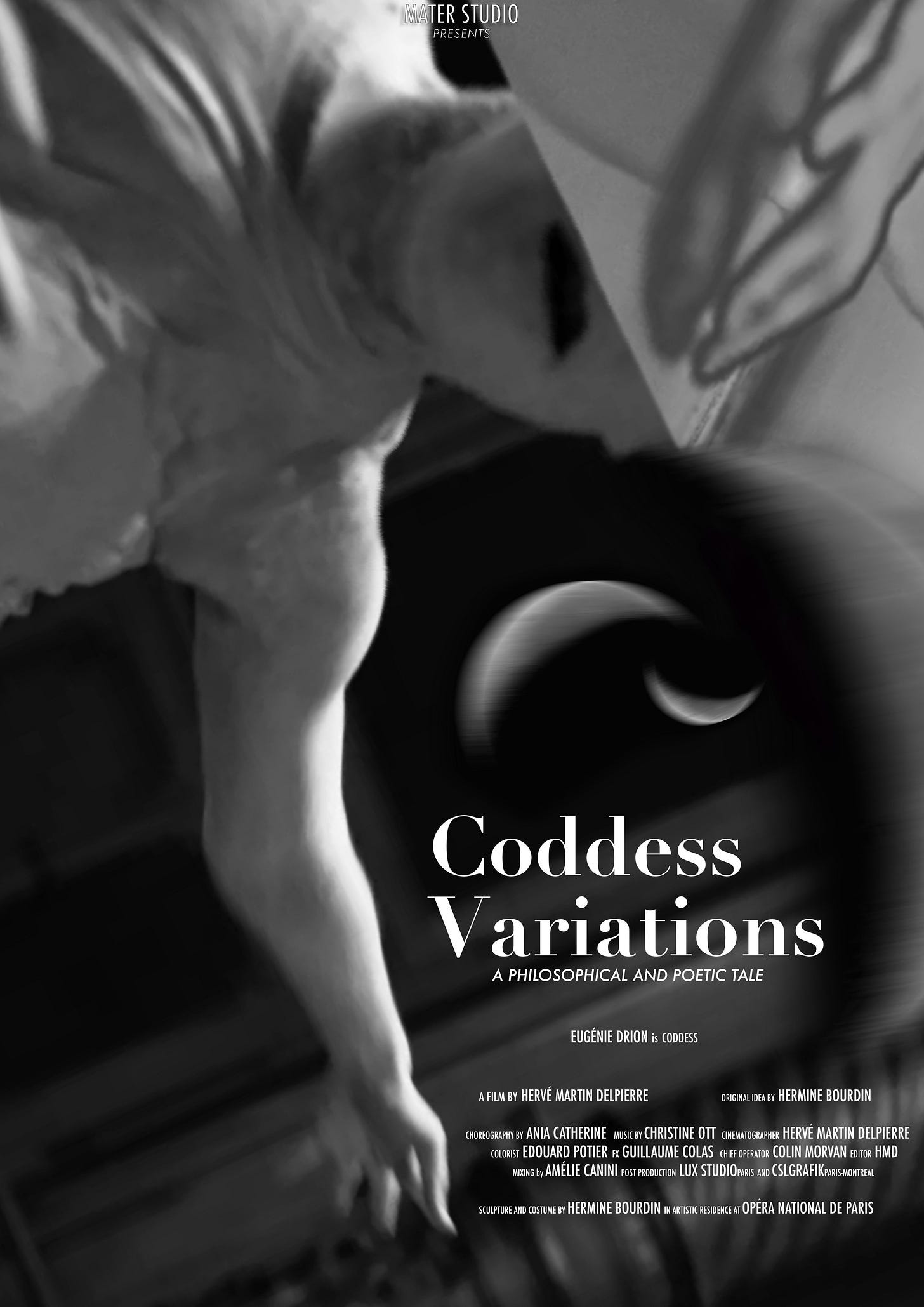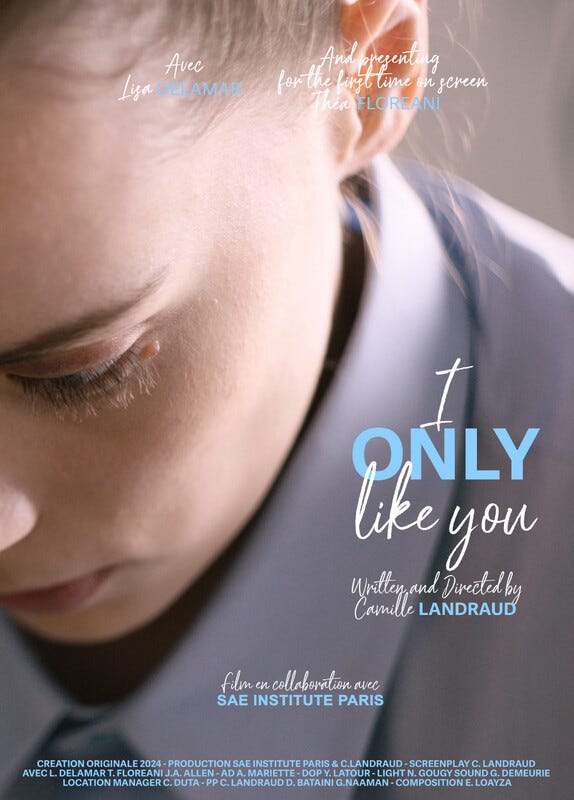ÉCU 2025: Launch Party and Release of the Official Selection
Written by Guillaume Antignac
Friday March 28th, 2025
It started to rain around 7:00pm, and guests were rushing under cover as the presentation began at the Tro’ Quai, a small brasserie along the canal de la Villette, where ÉCU’s crew and some of their selected filmmakers gathered to celebrate The European Independent Film Festival’s Launch Party and unveil this year’s official selection.
20 different countries, 43 independent films in 12 categories, and 25 awards are the stats headlining this year’s film festival, the 20th edition of ÉCU. At the Launch Party, I had the chance to speak with some of the filmmakers about their films.
‘River Oaks’ — Kalyani Persaud
‘River Oaks’, nominated for Best Non-European Dramatic Short, tells the story of Alliana (Eden Zoe), a young gymnast who learns that her coach Andrew (Sam Stickels) has sexually abused many of her teammates. Drawn from the case in which Larry Nassar, doctor of the US National Gymnasts Team, was confronted with hundreds of allegations of sexual abuse, Persaud’s film takes much of its roots from reality. To some degree, the film is also her own experience.
Persaud worked as an assistant for a humanitarian rights journalist between the ages of 18 and 22. She explained how during that time, her mentor had shown interest in her, but she had always maintained professional relations with him. Towards the end of her time working with him though, another woman working as an assistant accused him of abuse, and 9 other women followed with allegations against the journalist.
“I wrote the script angry at him, about you know, the death of him, or, the consequences of him. And I realised that, this script where the bad guy gets what is coming to him, doesn’t actually happen.”
Initial attempts at the story left her feeling unsatisfied with the effect of a conclusive ending. Persaud remarks that from the outset, conventional narrative structure forced the abuser in the position of an inherently evil character. This bothered her deeply, as it fictionalised too much what was ultimately a real feeling for many women: the feeling of uncertainty - even ignorance - she herself had in her experience, not knowing that this person in a position of superiority is also an abuser.
Persaud also stated this as one of the key challenges while filming. During initial rehearsals, Stickels played a bad guy, while Zoe played a timid girl. It was as if the relationship they had to one another was predetermined. That was precisely the problem: In Persaud’s own experience, she didn’t know the abuser was an abuser, just as she didn’t know she could have been a victim, until one person comes forward and affords the luxury of clearer hindsight.
“I really had to figure out, you know, how their characters would act in the situations that they were in. […] I think that when you try to make something so naturalistic that you know is not, your actors know something’s going on. But you’re trying to tell them: nothing is going on!”
Persaud had to dismantle her actors’ initial performances. Throughout most of the film, they are just playing what seems like regular characters. Only at the end do they become defined through a victim and abuser dynamic. In delaying that performance to the end, Persaud captured not one confrontational relation of ‘good’ and ‘evil’, but, as she herself put it: “the movement of it happening […] what it feels like to be a woman in that position.”
This was ultimately her goal. Because for women who are the victim of abuse, according to Persaud, it’s not so much one moment of wrongful action that defines sexual abuse, a “black and white statement of: I’m hurt”. The complexity that comes with these situations is that they occur through a collection of violations subtly weaved across an abusive power dynamic. It traps the woman into victimhood, isolating her from the possibility of speaking out or being heard. That’s also why it’s so painful, Persaud explains, quoting the lines she wrote to end her film: “I thought it was just me.”
‘I Wish You Could Be Happy Again’ — Djimili Dimou & Jordi Gueyrard
‘I Wish You Could Be Happy Again’ is nominated for Best European Music Video, bringing to life Stuck in the Sound’s hit song from the album ‘16 Dreams a Minute’ (2024). It’s a production of Praxis Studios, a Paris based company which Jordi Gueyrard co-founded in 2016, and which also produced Djimili Dimou’s film ‘Une Charogne’ (2024).
The two directors’ friendship and professional collaboration goes back to 2015, in the hallways of Canal+, and they’ve since brought an aesthetic strongly influenced by genre cinema to the screen together. For this project, they confessed pretty quickly: “The biggest challenge was the money […] so we put all the money in the aesthetics.”
Indeed, the music video exudes the style of the 1980’s, with our generation’s nostalgia of 2000’s birthday parties, CD players and ice lollies thrown into the mix. Gueyrard wanted to do a monster as disgusting as possible. Dimou had the idea of a character alone in a devastated world (based off the lyrics of the song). So, they went with it.
“We wanted to make this disgusting creature with funky colours - this blob.”
The inspiration initially came from the hallmark 80s and 90s horror movies by Wes Craven and John Carpenter. Creatures drawn from the depths of imagination, along with the colour crush and neon. Of course, the tune also matches the images. Stuck in the Sound’s music is also stuck in the 80’s… a beat with a dry kick and snare, guitar and bass, ornamented by synth chords and a catchy chorus.
“We wanted it to be visually fun, to make it look good, to play with the locations. We even played with AI a bit!”
The 80s look was indispensable. But they didn’t want to use expensive CGI. So, they had to create most of the effects themselves. Yes, the mask is real. As is the slime dripping from the creature’s mouth and fingers. Even for some of the more ambitious shots, like walking along a war-ravaged street, or eating ice cream from the window of a run-down façade, Dimou and Gueyrard used Artificial Intelligence to generate the images, instead of employing expensive means to create it themselves.
The result is a catchy and charming music video about the melancholy of a lonely monster. “It was fun to see a disgusting monster to be lonely, sad, with his little suit and everything.” Dimou and Gueyrard wanted to also humanise the creature - to create empathy in the audience that might question our prejudice of how culture usually portrays monsters: “The message was, even if you are disgusting, you have the right to be sad. To be loved.”
‘CODDESS VARIATIONS’ — Hervé Martin-Delpierre & Hermine Bourdin
‘CODDESS VARIATIONS’ is one of this year’s nominees in the category Best European Experimental Film. The project directed by Hervé Martin-Delpierre, uses Butoh inspired dance to (literally) bring to life the two-metre sculpture of a palaeolithic Goddess, made by Hermine Bourdin while in residence at the Opéra National de Paris.
Though they affirmed the film is anti-linear, the loose narrative of the dance follows a palaeolithic goddess who comes to earth and experiences the bases of femininity. She becomes a crone, a mother, and a maiden, through an allegory of the female experience in the world, with hints of cosmological and ontological symbolism.
“I seek to grasp the formal and symbolic essence of femininity” says Bourdin on her website. Indeed, her abstract work which takes much inspiration from the Palaeolithic and Neolithic periods, also in the materials she uses such as clay, stone, or bronze, often captures the female body and with it, in more or less abstract form, a part of what it means to inhabit that body.
Her recent sculpture of Cape Verdean icon Cesaria Evora, which sits in the multicultural hub of Paris, Saint-Denis, replicates not just the singer’s physical shape in abstract form, but also evokes the nostalgia of ‘saudade’, a melancholic feeling of homesickness associated with her music.
But ‘CODDESS VARIATIONS’ ventures beyond static sculpture into the living, and even beyond into the digital. The title, a play of words on the Goddess Variations, refers to a series of yoga poses initially drawn from Hindu mythology which symbolise divine femininity and cosmic knowledge. The twist from God- to code- refers to the digitalisation of the artwork into a collection of dance, sculpture, and visual media, which are available for exclusive sale as non-fungible tokens (NFT) on the Ethereum blockchain.
Bourdin explains she had been obsessed with the idea of making a living sculpture, and then creating an artistic dialogue with dance. “Hybrid”, she muses aloud to describe her inspiration behind the project.
Following the completion of the initial sculpture while in residency at the Opéra National de Paris, she began working on the costume for her dancer and interpreter Eugénie Drion, along with the opera’s director of costumes Christine Neumeister. They used polyurethane foam, the one often used in the filtration of aquariums, for its lightness and durability. “It was a very technical challenge to make a costume that both moulded the dancer, and in which she would also be able to dance”, Bourdin explains.
Martin-Delpierre called this project like a “freedom kingdom” when he spoke about it. Across his career as a documentary filmmaker, he has worked on productions with companies like Showtime, HBO, or the BBC (to name a few). This project spoke to him because of the creative freedom it entailed for all artists, sculptress, dancer, and filmmaker alike. But shooting the movement of a dancing sculpture also came with its challenges.
The dance style Drion chose veers away from traditional choreography and takes much of its inspiration from Butoh, a Japanese contemporary dance style which rejected traditional dance in favour of free movement and expressionism. Like Bourdin and Martin-Delpierre, who take their inspiration from icons like Jean Cocteau and Jean-Luc Godard, Butoh’s initial founders took inspiration from figures such as Jean Genet and Antonin Artaud, all of them loosely associated with the ideas of surrealism and later, post-structuralism.
In a cinematic sense, shooting this kind of dance poses a whole range of technical questions. Martin-Delpierre began his filmmaking journey with a Leica and one wide angled lens. This made his filmmaking very observational, but perhaps more importantly, forced him to be creative with what he has, and to be quick on his feet. “I understood at what point it’s a huge power for you to dream, for your spirit to understand the world. Because you need to be creative. And nothing is more efficient for that than to be in front of the same frame every time.”
For this shoot, Martin-Delpierre also decided to use only one wide angle lens. This means that the image shot has a larger depth of field, which gives the subject and filmmakers more freedom of movement while filming, as there is more ‘space’ in the frame. It allowed Martin-Delpierre to capture the energy of the dance - not just the sculpture coming to life, but also the dancer in her different positions. As he put it: “An attitude. A human expression.”
Though he spent most of his career in documentary, paradoxically, Martin-Delpierre remarks that this kind of experimental artistic expression can say a lot about real life. To him, “fiction and surrealism are many times the best way to understand the realistic life.” It’s at least another part that drew him to the project. Aside from the creative freedom, ‘CODDESS VARIATIONS’ is above all an allegory about life and existence as a woman. It entails far more than meets the eye.
‘I Only Like You’ — Camille Landraud
Landraud told me a personal anecdote. She found herself reading a queer book in public, terrified that somebody was watching or judging her for her taste in literature. Amid paranoid attempts to hide the book’s cover, Landraud boldly caught herself in her hysteria. “You know what, fuck it!” she said to herself, and opened the book fully, for all to see. To her surprise, nothing happened.
“I thought I saw people looking. I realised that they were not.” She asked herself: “How much am I really dreaming, and how much is this really happening?” Landraud came to the realisation that she had internalised not a reality of everyday banal judgments made in public, but a broader way the world perceives queer people. It’s what inspired her to write and later direct ‘I Only Like You’, nominated for Best Student Film at ÉCU 2025.
The film tells the story of a Policewoman struggling to let herself love another woman, for fear of judgments from others in her direct environment, notably her reticent father, who’s thoughts on her sexuality mirror the obscurity of the feelings she denies to herself. The subtlety and realism of such a story didn’t come easy to Landraud, who is starting out as a director.
Her initial training was with the Cours Florent, a well-known private drama school in Paris. She always had a preference for the more realistic, sincere acting style she was herself taught, and she wanted to pass that onto the actors for her own film. The story she wanted to tell; she wanted her actors to “live it”.
Landraud did many rehearsals with her actors, trying to bring an authentic performance out of them drawn in part from her own experiences. But she came into a bit of a challenge. “You know what I realised” her lead actress Lisa Delamar tells her in the middle of rehearsals. “This character is actually the entire opposite of me. She reacts a bit like a turtle, so when she’s hurt, she goes back into her shell, and takes the hits. But when somebody hurts me, I come and hit them back.”
“That was the biggest challenge for me on the film” Landraud recalls. She had to summon memories to transmit to Lisa. “I think she did a good job” she sighs with relief.
It’s through such realism that more complex emotional challenges like the relationship with the father can come through the screen. He symbolises not just the people you love and their judgment, but broader society. “How do you convey your true self to people, when you deeply know who you are, but aren’t accepted for it?” Landraud says that getting through to the people you value the most in your life is “really hard to break”.
“A parent is someone that gives you validation in life, you feel like when they say yes, you have the right to be there.”
With this response, Landraud explains why her character doesn’t have the luxury of being bold, like her actress Delamar. Confrontation in a relationship which from the outset is put in question can only carry the threat of rejection. The turtle technique might be less effective, but it’s the most logical reaction. Landraud likely knew this when she was writing.
It’s why she cast her lead to also be a policewoman. “I have an obsession with the police thing”, she laughs shyly, admitting the police has always symbolised strength and power to do good for her. “Yea, it’s not just the cliché of a policewoman that is gay. Ok yeah, I know it exists. But it’s about being emotional, being truly vulnerable in a world where you don’t really think it is possible.”
Landraud explains that even though modern media and films can often portray self-identification and coming out as a real possibility that is accepted by others, she remarks that real life is less simple. Often, even if you’re told so, you can sometimes get the feeling that you’re not really allowed to do this. Her film attempts to show that. Maybe, for some, it can also make the weight of being oneself a little lighter.
Written by Guillaume Antignac







